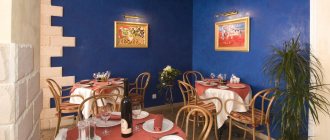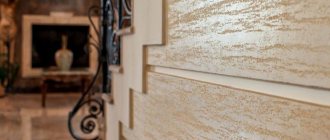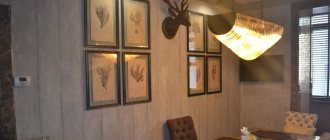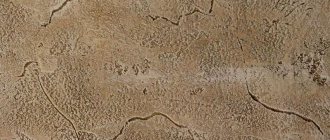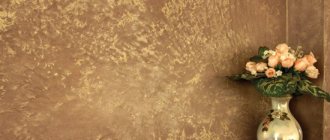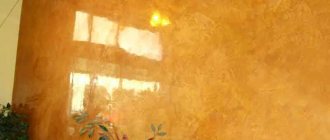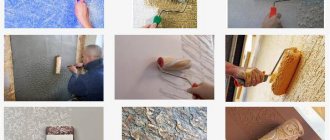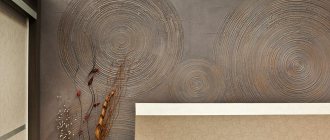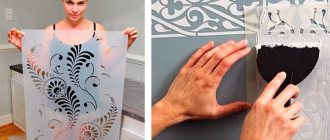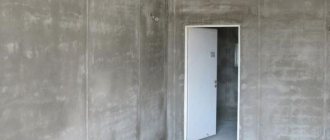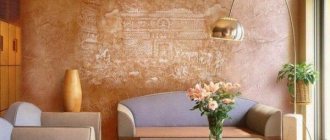If you are a 3D designer and work in specialized programs such as Cinema, 4D 3ds Max . And you are engaged in visualization and design of interiors and exteriors, then you simply need textures of decorative coatings for walls such as Venetian plaster texture , seamless plaster texture for relief wall coverings, plasters imitating natural leather, silk-like plasters, imitation of natural stone and wood. High-quality textures for walls in a 3D interior always mean freshness, rich volume and an extraordinary interior solution in residential areas. The imitation of precious stones in the interior thanks to the technology of decorative (Venetian) plaster is joining the ranks of its connoisseurs every day. This special type of plaster has a two-color component, which creates an amazing effect of shine and shimmer under different degrees of illumination. Almost every texture comes with a corresponding Bump and Reflection map
Below you will find samples of such textures with a resolution of 1024x1024 px.
Cracks 01 Bump
Cracks 01 Diffuse
Cracks 01 Reflection
Cracks 02 Bump
Cracks 02 Diffuse
Cracks 03 Bump
Cracks 03 Diffuse
Cracks 04 Bump
Cracks 04 Diffuse
Daub 01 Bump
Daub 01 Diffuse
Daub 02 Bump
Daub 02 Diffuse
Daub 03 Bump
Daub 03 Diffuse
Daub 04 Bump
Daub 04 Diffuse
Daub 04 Reflection
Daub 05 Bump
Daub 05 Diffuse
Daub 06 Bump
Daub 06 Diffuse
Daub 06 Reflection
Daub 07 Bump
Daub 07 Diffuse
Daub 08 Bump
Daub 08 Bump 1
Daub 08 Diffuse
Daub 09 Bump
Daub 09 Diffuse
Daub 010 Bump
Daub 010 Diffuse
Daub 010 Reflection
Daub 011 Bump
Daub 011 Diffuse
Daub 012 Bump
Daub 012 Reflection
Daub 013 Bump
Daub 013 Diffuse
Fabric Imitation 01 Bump
Fabric Imitation 01 Diffuse
Fabric Imitation 01 Diffuse-2
Fabric Imitation 02 Bump
Fabric Imitation 02 Diffuse
Fabric Imitation 02 Reflection
Fabric Imitation 03 Bump
Fabric Imitation 03 Diffuse
Leather Imitation 01 Bump
Leather Imitation 01 Diffuse
Leather Imitation 02 Bump
Leather Imitation 02 Diffuse
Lightning 01 Bump
Lightning 01 Diffuse
Lightning 01Gloss
Lightning 01 Reflection
Lightning 02 Bump
Lightning 02 Diffuse
Lightning 02 Reflection
Microcement 01 Diffuse
Microcement 02 Diffuse
Microcement 03 Bump
Microcement 03 Bump 2
Microcement 03 Diffuse
Noisy Random 01 Bump
Noisy Random 01 Diffuse
Noisy Random 02 Bump
Noisy Random 02 Diffuse
Noisy Random 02 Mask
Noisy Random 04 Bump
Noisy Random 04 Diffuse
Noisy Random 05 Bump
Noisy Random 05 Diffuse
Noisy Random 06 Bump
Noisy Random 06 Diffuse
Noisy Random 07 Bump
Noisy Random 07 Diffuse
Noisy Random 08 Bump
Noisy Random 08 Diffuse
Noisy Random 09 Bump
Noisy Random 09 Diffuse
Noisy Random 010 Bump
Noisy Random 010 Diffuse
Pattern 01 Bump
Pattern 01 Diffuse
Pattern 02 Mask
Pattern 03 Bump
Pattern 03 Mask
Pattern 03 Mask 1
Pattern 03 Reflection
Stripes 01 Mask
Stripes 02 Bump 1
Stripes 02 Bump
Stripes 02 Diffuse
Stripes 03 Bump
Stripes 03 Diffuse
Stroke 01 Diffuse
Stroke 02 Bump
Stroke 02 Diffuse
Stroke 02 Reflection
Stroke 03 Bump 2
Stroke 03 Bump
Stroke 03 Diffuse
Stroke 03 Diffuse 2
Stroke 03 Reflection
Stroke 04 Bump
Stroke 04 Diffuse
Stroke 05 Mask
Stroke 06 Bump
Stroke 06 Diffuse
Stroke 07 Bump
Stroke 07 Diffuse
Stroke 08 Bump
Stroke 08 Diffuse
Travertine 01 Bump 1
Travertine 01 Bump
Travertine 01 Diffuse
Travertine 01 Reflection
Travertine 02 Bump 1
Travertine 02 Bump
Travertine 02 Diffuse
Travertine 03 Bump
Travertine 03 Bump 1
Travertine 03 Diffuse
Wax 01 Diffuse
Wood Imitation 01 Bump
Wood Imitation 01 Diffuse
Wood Imitation 01 Reflection
Format: Jpeg Texture size: 1024x1024px.
New entries on the topic
Features of textured plaster
The composition of textured plaster, along with the binder, also includes other components that make its consistency softer - pieces of granite or other minerals.
Using this fine-grained mixture, it is easy to create a colorful texture on the smooth surface of the ceiling and walls. If necessary, it can be used as putty.
Plasters of this type are used for decoration. A thin layer of the composition is applied to the surface of the walls and the desired pattern or relief pattern is created on it.
Their main properties:
- plastic;
- viscosity;
- strength;
- no shrinkage after applying the layer and drying it;
- immunity to high temperatures;
- ease of application on any surface, even with imperfections.
You can make textured plaster yourself. To do this, add stone chips or wood fibers to the usual composition and tint the resulting mass.
This finishing material has a number of advantages over others:
- Textured plasters can be considered a universal way to decorate walls. The original coating can be selected for any interior style.
- Patterns and designs to create texture are done quickly and effortlessly. It is enough to move the roller one or several times.
- The composition includes components that are resistant to ultraviolet rays. The initial color saturation does not change over time.
- You can add different paints to ready-made mixtures and change their shades and tone.
- Characteristic enhancement of the thermal insulation properties of the base.
- Environmentally friendly composition. It does not release harmful substances into the surrounding space. Suitable not only for decorating the exteriors of buildings, but also interiors.
- To increase the aesthetic expressiveness of textured plaster, mother-of-pearl is added to it.
Textured or relief plaster does not smell. It also does not absorb foreign odors. When working with this material, you should strictly follow the rules for applying plasters of any kind to walls. Otherwise, it may begin to gradually collapse. Or vice versa, it will be very difficult to remove it, if necessary.
Compositions of plasters for decorative finishing
Not only the appearance of the coating, but also the method of its application depends on the composition of the decorative putty and its filler. Depending on the main substance in the mixture, the following types of decorative plasters are distinguished:
- Cement. They are most often used for exterior work, as they are resistant to external influences, and as a basis for applying other finishing compounds. In the interior, cement mixtures are used extremely rarely as finishing materials, but for the recently popular loft style they are ideal and are an excellent base for simulating a brick or concrete surface.
- Acrylic. The main component of such decorative mixtures is acrylic resin - a special high-molecular polymer. Such compositions are elastic and easy to apply to walls. A variety of pigments for tinting allows you to give acrylic mixtures any shade. Under the influence of ultraviolet radiation, the coating can deteriorate and crack, so such products are not used for outdoor work. Acrylic-based mixtures are sold ready-made, so their price is slightly higher than that of compositions that require self-preparation.
- Silicone. This putty is based on a special synthetic resin. The material is ideal for both internal and external finishing work. Mixtures with this composition make it possible to create reliable coatings that are resistant to sunlight, humidity, and unpleasant odors. Manufacturers offer such compositions in a wide range of shades in ready-to-use form, and their special consistency makes the work much easier.
- Silicate. These putties contain alkaline potassium carbonate and quartz sand, from which a special binder is obtained, the so-called “liquid glass”. The main advantage of such compositions is durability (service life from 50 years) and strength. Surfaces coated with silicate mixtures are resistant to moisture and fire. You can buy such plasters only in finished form, from the offered range of shades, since their manual tinting is not provided.
Types of textured plasters
There are several types of popular plasters. They are easy to make yourself. This does not require any special professional skills. A solid but breathable compound applied to a flat surface can resemble wood, leather, natural stone or fabric.
Bark beetle
The plaster called “Bark Beetle” resembles a wooden surface eaten away by bugs. The color, size and volume of the fractions differ.
The walls of a building or room can be decorated either completely or fragmentarily. “Bark beetle” is a finishing coating that is applied to stone, brick, cement, plasterboard or wood surfaces that are strong enough to support the weight of the plaster without deformation. Bright and expressive effects can be achieved using mixtures with inclusions of different sizes.
In this case, their properties will be identical. This type of plaster is also successfully used for exterior work - finishing fences, walls, garden gazebos.
They decorate bathrooms and swimming pools. To prevent exposure to moisture, the finished surface is coated with a special protective varnish.
Under the brick
One of the most stylish and interesting types of textured plaster is considered to be an imitation of a brick wall. Smooth, unsloping walls are suitable for decoration. If there are flaws or tilt, the defects are first eliminated. The cracks or individual recesses are sealed with mortar. The cemented surface is primed. If the walls are smooth, there is no need to use cement mortar. They are immediately treated with a primer with the addition of glue. When creating a brick finish, you should take into account the dimensions of real bricks, which are not only rectangular, but also square.
Application technique: how to make a coating with your own hands?
The subtleties of finishing consist of the following steps:
- The clean surface must be tinted, and then a primer layer is applied on top of it. Use a medium-sized roller to level the primed surface.
AdviceWhen doing this work, it is not necessary to work with the roller in a strict direction. The main thing is to seal all the seams and the entire surface with a layer of primer without gaps.
- Wait until the first layer dries, then apply the second. This time you need to use a spatula. The surface should become flat and smooth. Using a stainless spatula, apply a thickening final layer of primer in small portions so as not to spoil the normal thickness of the entire space.
- The dried surface is treated with fine sandpaper. All construction dust and dirt are removed with a damp cloth or vacuum cleaner. Now you can begin to directly apply the main plaster layer.
- The first layer of golden decorative plaster is applied to the wall using a roller.
Due to this action, a beautiful texture will begin to be created. In order not to hide the previously applied substrate, you need to apply the solution a little at a time and distribute it lengthwise in a dense layer. Movements should be fast, but without pressing hard on the tool. - Use a spatula to perform multidirectional movements. They should not be directed only from top to bottom, and vice versa. The hand should slide along the surface vertically, in a circle, diagonally and vertically. It is important to observe this point so as not to get a uniform, unnatural pattern.
- After the first layer, the second is applied. Before this, clean the wall again with sandpaper and wipe everything with a damp cloth. But this time the re-prepared solution is tinted to the desired golden shade. Two layers can be applied in a row. It is important that one layer is lighter than the first, then you will get an unusual style.
- After drying (after about 1–4 days), you need to treat the finishing layer of gold plaster with wax. It will improve the appearance of the wall covering and provide its protection from fungal deposits and mold. It is not afraid of any humid environment or sudden temperature changes. You can apply two layers to accurately cover all joints and irregularities with wax and provide high-quality surface protection against fungus and mold.
Color range of textured plasters
To create plaster mixtures, natural and natural paints are most often used. It is best to imitate wood using yellow or ocher shades, such as straw, golden oak, or pear. But brown colors are also suitable - nut, light brown with a hint of ocher, coffee, cream.
White textured plaster is most often used to decorate public buildings and offices. Its neutral shades allow you to add solemnity to any room with a large area.
This finish is also suitable for small rooms and bedrooms. Makes them lighter, creates the illusion of exceptional purity and freshness. White walls fit perfectly into many interiors and suit any color palette. They prevail in Scandinavian style and in most modern ones.
Gray plaster with a concrete or metal effect is chosen by lovers of high-tech, industrial, techno, minimalism or loft styles.
Mother-of-pearl options with a beautiful patterned texture will delight owners of interiors in oriental styles - Arabic, Indian, Moroccan and Asian. The walls look especially original in combination with mirrors and decor with mother-of-pearl inclusions and silver metal.
Compound
Usually, mica, gypsum, sand, ground brick particles, and wood fibers are added as inclusions to plaster mixtures.
Textured acrylic plasters also contain acrylic resins. This allows you to give the mixture the necessary plasticity and increases the possibility of setting with bases of all types.
The use of a spectrum of acrylic paints makes acrylic-based plasters the leaders. This finish is durable and durable. But there are also disadvantages. First of all, the flammability of the mixture and the ability to attract dust.
How to apply textured plaster
Home comfort and cleanliness often depend on the right choice of materials. Decorative plaster is considered one of the most interesting design options for modern apartments and building facades. It can be applied to walls and ceilings either by hand or using mechanisms, for example, a plastering station. A large selection of textures and shades allows you to use the compositions in new design projects or complement the design of walls and ceilings in previously created interiors.
Before starting work on applying textured plaster to any surface, you need to clean it of any remaining wallpaper, debris or dust. And then do the following:
- Carefully prime the wall.
- Choose a relief based on the capabilities and characteristics of the room. It can be a rock, wood, natural stone, orange peel, bark beetle and a number of others.
- Evenly distribute the contents of the package or container over the surface using a spatula.
- Adjust the resulting patterns or texture with a brush or sponge, and smooth out the resulting seams.
- To give the texture greater relief, you can use not only construction tools, but also improvised means: flat paint brushes, a notched trowel, a relief roller, crumpled stiff paper or whatman paper.
Required materials and tools
Before applying gold decorative plaster, the following tools must be prepared:
- Trowel. This is a triangle with a flattened top in the shape of a trapezoid. With this tool it is easy to scoop the solution and distribute it along the wall.
- Joining trowel. You can take flat, convex or concave, depending on the intended design or ornament. The working surface should be narrow in order to comfortably hold the trowel in your hand and so that it does not slip off.
- Trapezoidal finishing trowel. Needed for mixing the solution and measuring bulk substances.
- Trowel in the form of a drop. Such an instrument has a handle attached to its wide part. You can use angular, rectangular or jagged - the shape depends on the final design.
Attention
The most important tool is the roller. There are countless of them, but you can always choose the one that is best suited for the job.
You can purchase plastic, wooden, rubber, leather, fleecy or foam rollers.
To imitate the texture of marble, pile or wood, leather, fleece or fabric tools are suitable. For clearer patterns and ornaments, you should choose wood, plastic or rubber. A spatula is an indispensable tool for rubbing, making the surface even and smooth. They can be used to press the layers more tightly together.
You need to prepare a construction container where the solution, which is prepared according to the instructions, will be mixed with a drill and an attachment. It is more convenient to transfer the finished solution from a plastic bucket into a flat container.
You should also stock up on rags to remove smudges, take sandpaper, which can be used to straighten large prominent parts after drying, and apply the material on top of each other along the joining part. It's a good idea to have gloves to protect against any caustic compounds that may get on the surface of your skin. It is better to work in special clothing, a mask and goggles.
Application in the interior
Decorative wall decoration in the form of textured plaster allows you to emphasize the advantages of various interiors. The presence of Bark Beetle plaster in an apartment or office enhances its modern look and adds practicality to the design.
The matte surface with long grooves applied to it is very similar to wood. Beige, blue or pink shades are chosen for bedrooms, and more saturated colors for hallways.
Kitchen walls coated with a dark composition will look gloomy. Therefore, they plaster with textured mixtures with delicate shades or combine colors.
Textures similar to drops of water, sea foam or snake skin look impressive.
How to make textured plaster yourself
The cost of the decorative composition depends on the brand of the incoming components. Buying ready-made textured plaster from well-known manufacturing companies can be expensive. But, if you make the mixture with your own hands from putty, then decorating the walls with it will be much more profitable than with wallpaper. The mixture, made independently, is suitable for application with a roller or using a stencil:
- The base is gypsum or chalk powder (6 kg 500 g).
- 2 kg of CMC glue solution (5%). Bred in accordance with the recommendations src=”https://balkon4life.ru/wp-content/uploads/2020/04/5e284af49f35998f484a3455.jpg” class=”aligncenter” width=”480″ height=”600″[/img]
- 800 g PVA glue.
- 1 bar of laundry soap (72%) serves as a plasticizer. Grind on a grater and dilute with water to the consistency of thick sour cream or gel.
It is better to mix the ingredients with a construction mixer. First, liquid components, and then gradually add powdered ones. Leave for a while and then mix more intensively. This composition has a long drying period, which allows it to be used even by inexperienced beginners.
Price
The cost of the decorative composition depends on the brand of the incoming components. Buying ready-made textured plaster from well-known manufacturers can be expensive. The price for 1 m2 of treated surface depends on the professionalism of the specialist, the quality and speed of work. If you do everything yourself, then renovations in a house or apartment can be done without spending a lot of money and time.
But you can also buy a ready-made mixture. VGT textured plaster is easy to apply. It is highly viscous and coarsely dispersed. It is distinguished by its versatility, as it can be used to decorate various coatings. In addition to elasticity, the composition is moisture resistant. Suitable for indoor and outdoor use. Preliminary preparation of surfaces is not necessary. All defects are smoothed out using this mixture, which is made on the basis of acrylic binders and marble chips. One container holds 18 kg. 2 kg of mixture is required per 1 m2 (when applied in one layer). This means that one container is enough to treat a wall with an area of 9 m2.
Subscribe
Varieties: description and photo
The following are the types of such finishes, a detailed description of each type and a photo.
Chocolate with gold
The gold effect has a chameleon coloring or a chocolate shade. The natural pigments in the composition are bound by components in the form of aqueous dispersion and wood resins. The technology for making gold plaster depends on the proportional components and the final effect. You can achieve brightness with a chocolate shimmer, or you can thicken the colors to the state of dark chocolate with glittering gold inclusions.
Previously, such compositions were made only from plant components, but now even inorganic dyes are used. Classic mother-of-pearl plaster does not contain lime, but consists only of everything natural. It contains no more than 5% acrylic. This is explained by the fact that this proportion of acrylic gives the surface a look like aged silk or golden velvet.
Advice
The surface is primed to improve the adhesion of the wall to the plaster. It is better to use a deep penetration primer, apply it at least twice in a row. The first coat must dry well before applying the next one.
Glitter, beautiful patterns, interweaving tones and shades create a noble shimmer when exposed to sunlight or artificial light. Painting technology and composition are important for the result. The base is carefully prepared to match the color of chocolate and gold. They clean off the old plaster, remove construction debris, dirt, and dust. This is done with a damp cloth.
Errors are removed with putty of the base layer. After the wall surface has dried, they begin to apply a golden solution using an artistic spatula. For a better result, apply several layers in a row on top of each other. The effect of shimmering and interesting iridescence is created by multi-layer coating on a prepared base. The spatula is used to make chaotic movements to achieve the most interesting pattern.
With gilded sand effect
Golden sand is a good option for decorating living rooms, halls, and bedrooms. The interior in this style looks rich. Advantages of the material:
- Various ways to obtain coating. Depending on your hand movements, you can achieve different results due to the high concentration of quartz or river sand. The smaller it is, the better the quality of the drawing you can get.
- Health safety. Eco-friendly substances in the composition do not cause allergies or other health problems.
- Breathable effect. When steam enters the surface, it absorbs it and releases it back in a wet state. This is an important process for maintaining the indoor microclimate.
- Durability. This plaster has a long service life. Its use is possible for 8–10 years. It does not require any major repairs.
- Moisture resistance. The coating can be wiped with a damp cloth: nothing bad will happen to the plaster layer.
- Does not cause accumulation of fungal formations or mold.
Attention
If the gold coating is additionally covered with an even layer of wax, then the wall in this design can even be wetted with water. If the work is done correctly and the technology for applying wax to plaster is followed, this finish can be used even in the kitchen or bathroom.
Among the disadvantages are the high price of the material and the ability to absorb odors. But when covering the golden sand with a good layer of wax, this defect is not revealed. Therefore, in damp or utility rooms with active odors, the use of such a coating is also allowed.
White gold
In contrast to the gold effect, white gold visually expands the space. It is advisable to use this mixture in those residential or non-residential areas where it is necessary to increase the boundaries due to the small space. The white effect will add brightness to a gray room, which is important for well-being in cloudy weather.
White gold is a universal shade for any interior. Depending on the brand of plaster, which is selected depending on the base and added tinting, you can choose any paint for white gold that will create a beautiful effect. You can recreate the effect of sand dunes, which will be distinguished by a delicate shimmering picture. This technique is suitable for decorating a room in an ethnic style.
To finish the sandy wind effect, it is important to have a voluminous roller and a wide brush on hand to work with. Large strokes in several layers will provide a unique texture. The movements should intersect with the previous ones so as not to allow the previous layer to dry completely. Additional pastes increase texture and create additional shine.
